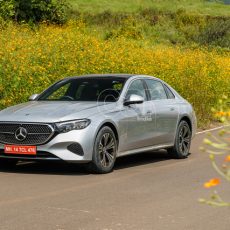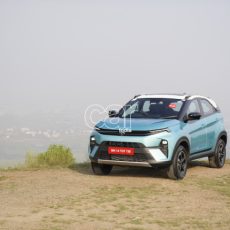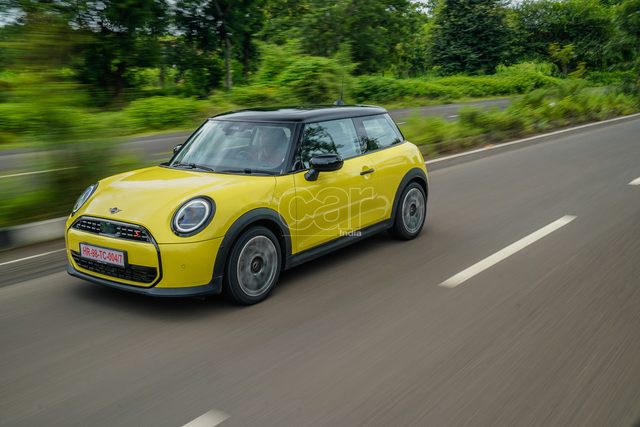With the manual version of the Virtus 1.0 TSI, which costs substantially less at Rs 11.2 lakh, we assess the quality of the lower-capacity Virtus
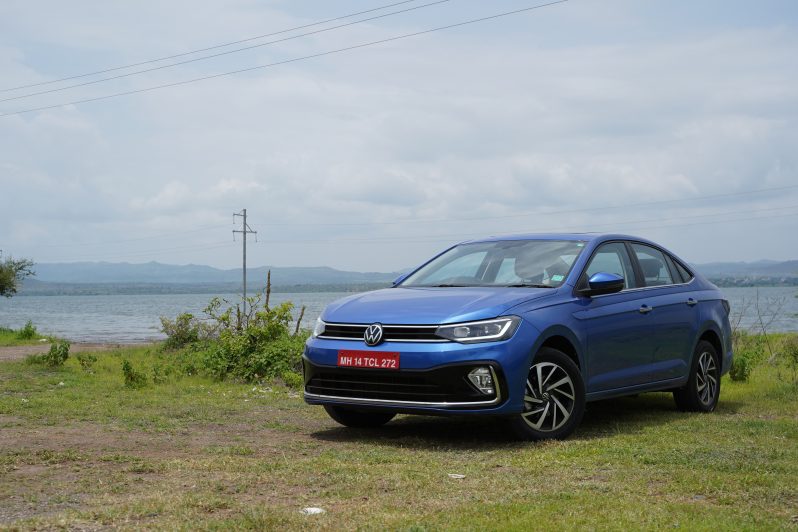
Story: Kurt Morris
Photography: Apurva Ambep
Given that sedans fell out of favour with buyers for a while in favour of sport utility vehicles (SUV), the Virtus has been a success for Volkswagen with over 5,000 deliveries taking place in two months and more. The Virtus has reintroduced the sedan to purchasers’ minds. We already drove the 1.0 TSI automatic, but we wanted to spend some time with the manual variant to assess how well it performs. Keep in mind that Volkswagen provide both a manual and automatic for the Virtus 1.0 TSI, but only a DSG automatic for the Virtus 1.5 TSI.
The Virtus boasts of a 95 per cent localization rate thanks to its MQB A0 IN foundation. With a length of 4,561 millimetres, the German automaker reiterates that it is the longest vehicle in the segment.
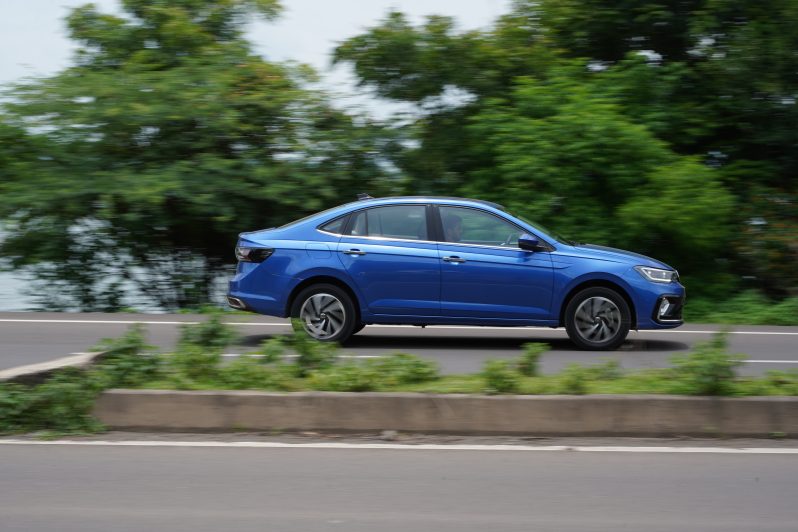
There are two versions of the new Volkswagen Virtus: Dynamic Line and Performance Line. We will discuss a number of cosmetic changes that the latter gains over the former in a moment. A single slat grille with a chrome border divides a pair of smoked LED headlamps with built-in LED daytime running lights (DRL) on the fascia of the Virtus. Further down, a broad air dam with chrome and gloss black inserts for the front bumper and halogen fog-lights on either side are located. The sequel of sorts of the Vento has wraparound smoked LED tail-lights, “Virtus” inscription on the boot-lid, which also has a space for the number-plate, and a chrome insert for the rear bumper, along with reflectors.
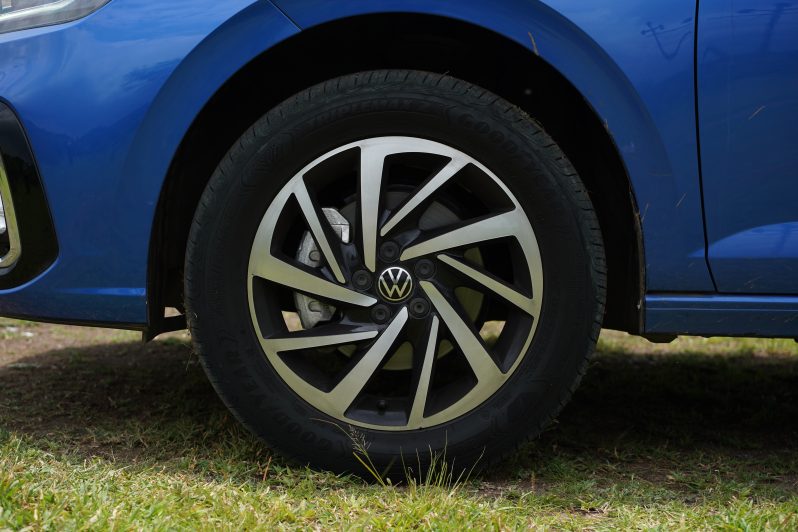
Once inside the Virtus, you’ll see that the dashboard, seats, and centre console all have a similar beige-and-black interior design concept. The centre console also features gloss black accents. The sedan has an electric sunroof, ventilated front seats, automatic climate control, wireless charging, a fully digital instrument console, a 10-inch touchscreen infotainment system with wireless Apple CarPlay and Android Auto, eight speakers, an engine start-stop button, paddle shifters, a leather-wrapped multi-function steering wheel, and cruise control, to name a few of the features.

Although the 115-hp 1.0 TSI engine is the same, we were eager to test it out with the six-speed manual transmission. After driving this gearbox for a few days, we found that we preferred it to the automatic since it was more enjoyable to drive. Although the automatic transmission is more convenient, the manual gearbox is not far behind because it is relatively easy to use and has a light clutch. This engine seems quicker than the automatic and you can pull more power out of it even in heavy traffic because the clutch and shifts are not heavy. The manual really outperforms the automated in terms of efficiency, with timely switches producing the best efficiency numbers. The 1.0-litre TSI motor in the Virtus with six-speed MT gave us an average of approximately 12 km/l in the city and 19 km/l on the highway stretch that we tested it on, making it one efficient sedan.

The ride and handling aspects remain unchanged as well. The Virtus exudes incredible confidence while handling like a dream at high speed as well as while approaching turns. It feels quick and sure-footed. A smooth ride is provided by the suspension, which is also rather supple and adept at absorbing all kinds of minor road imperfections. The flat-bottom steering wheel has a wonderful feel to it and is light and accurate. The light steering makes navigating through city traffic a breeze, even though a little more weight would have been helpful.

Over 40 safety measures are included in the Volkswagen Virtus, a majority of them being available as standard equipment across the range of variants. Anti-lock braking system (ABS), electronic brakeforce distribution (EBD), brake assist, rear parking sensors, and more are among the highlights. The top-spec version adds a rear parking camera and up to six airbags in addition to the dual airbags and ISOFIX child seat fixings that are standard.
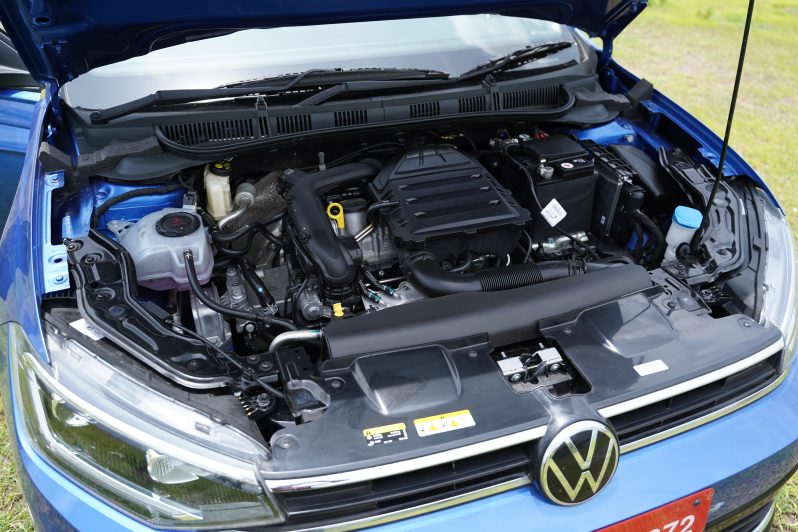
At Rs 11.2 lakh, the Virtus 1.0 TSI manual, albeit in Highline trim, is significantly less expensive than a compact SUV, making it a fantastic deal for anyone looking for a big, fun-to-drive sedan. The Virtus Highline manual is Rs 1.3 lakh less expensive than the Highline AT, which costs Rs 12.9 lakh, further up. As a fun-to-drive sedan, we believe the manual is the better buy. You won’t find a better deal than this. We also would go so far as to say that the Virtus 1.0 TSI manual is one of the best sedans to drive among those on sale today in India.


